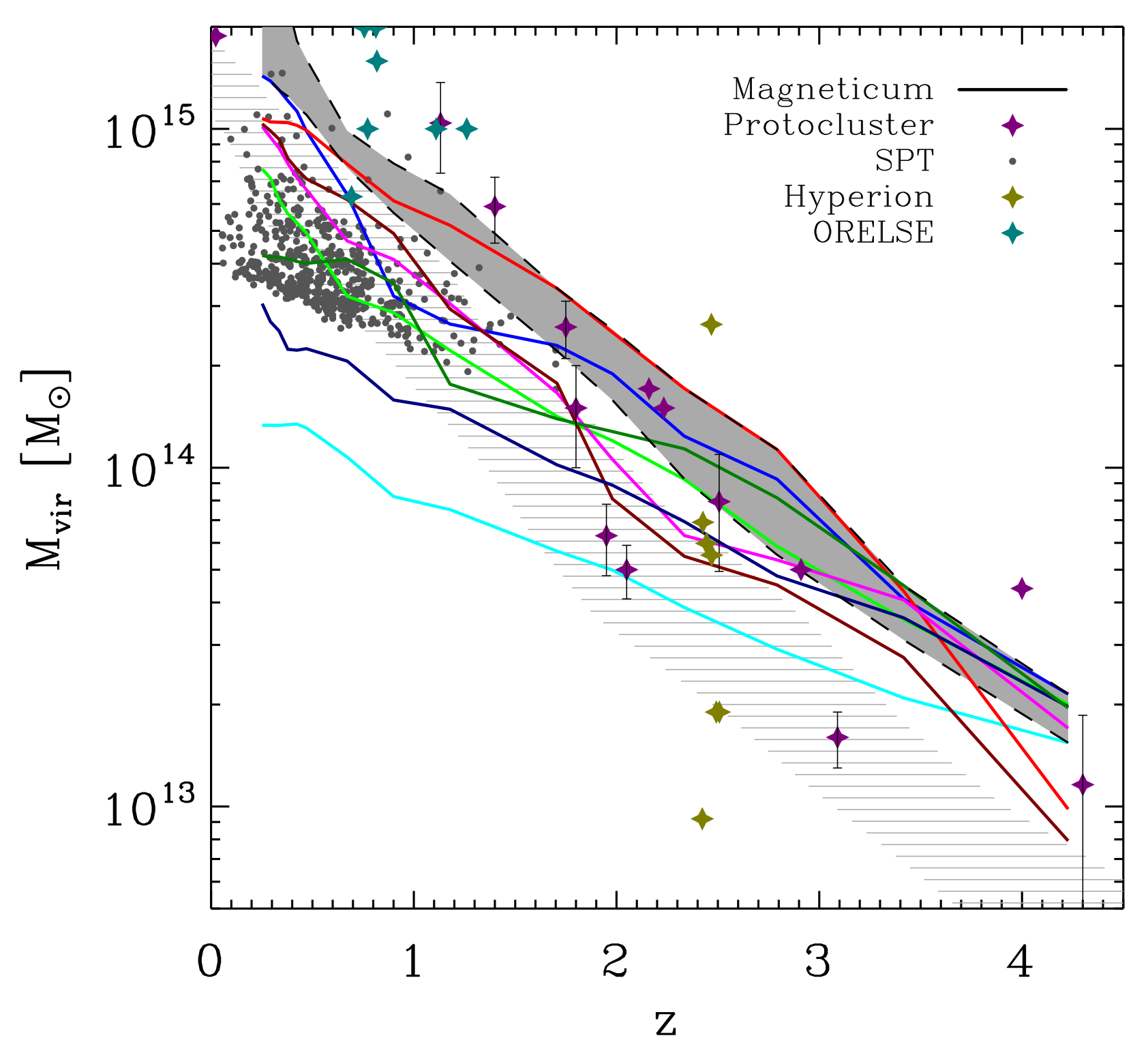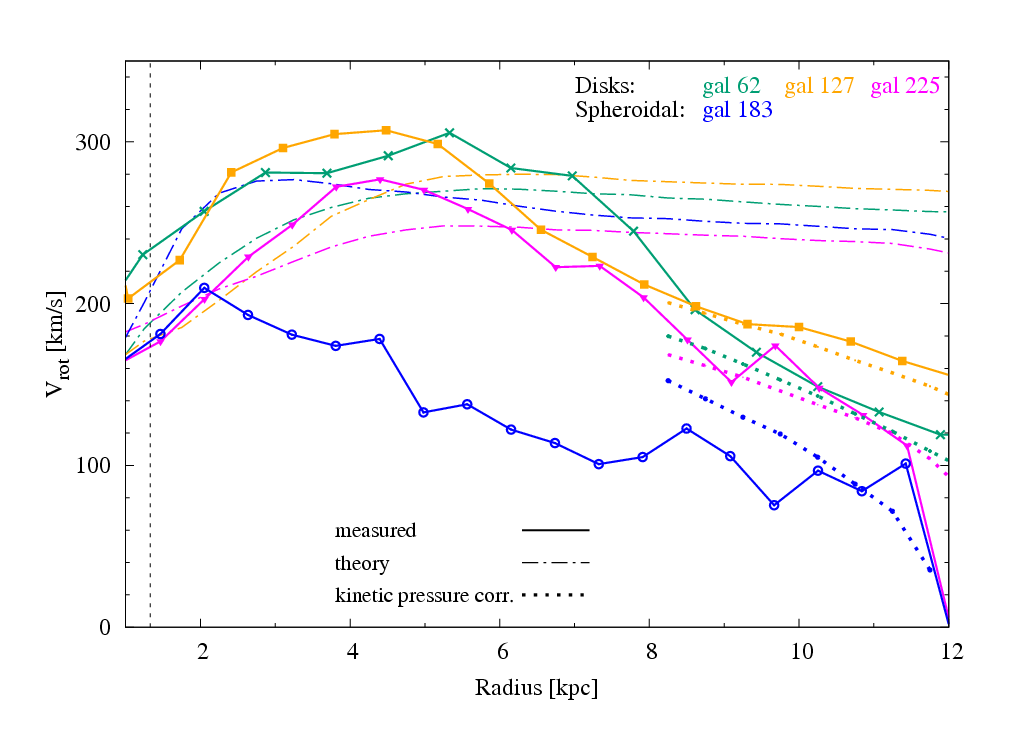High Redshift Galaxies and Protoclusters· · · · · Protoclusters
Agglomerations of galaxies at redshifts of z=4 and higher more and more often detected in recent years, and they are found to be close enough together to be bound structures or at least structures that are in the process of merging. These structures are thought to be the progenitors of todays most massive structures, galaxy clusters, and as such are termed protoclusters. Using one of the largest volumes of the hydrodynamical cosmological simulation suit Magneticum Pathfinde, we study the evolution of protoclusters identified at redshift z=4, with properties similar to the famous protocluster SPT2349-56. We identify 42 protoclusters in the simulation, as massive and equally rich in substructures as observed, confirming that these structures are already virialized. The dynamics of the internally fast rotating member galaxies within these protoclusters resembles observations, merging rapidly to form the cores of the BCGs of the assembling clusters. Half of the gas reservoir of these structures is in a hot phase, with the metal-enrichment at a very early stage. These systems show a good agreement with the observed amount of cold star-forming gas, largely enriched to solar values. We predict that some of the member galaxies are already quenched at z=4, rendering them undetectable through measurements of their gas reservoir. Tracing the evolution of protoclusters reveals that none of the typical mass indicators at high redshift are good tracers to predict the present-day mass of the system. We find that none of the simulated protoclusters with properties as SPT2349-56 at z=4.3, are among the top ten most massive clusters at redshift z=0, with some barely reaching masses of 1014 M☉. More details on this study are presented by Remus et al., 2022. Although the average star-formation and mass-growth rates in the simulated galaxies match observations at high redshift reasonably well, the simulation fails to reproduce the extremely high total star-formation rates within observed protoclusters, indicating that the sub-grid models are lacking the ability to reproduce higher star-formation efficiency (or lower depletion timescales). · · · · · Galaxies at z = 2
The observations and measurements of rotation curves are an important tool in deducing the (invisible) mass of a (disk) galaxy. For the rotational velocities of the visible mass, i.e. gas and stars, a Keplerian decrease proportional to r−1/2 is expected in the outer parts of the galaxy. What is seen instead for (local) disk galaxies is that the rotation curves remain flat. This can be explained by the presence of an invisible component and thus, lead to the acceptance of the concept of dark matter. Recently, observations of disk galaxies at high redshift (z = 2) have found that half of the gas disks exhibit declining rotation curves. This lead to the discussion whether dark matter is important, at all, and even the existence of it was put into question. In our hydrodynamical ΛCDM simulation Magneticum Pathfinder we find that about half of our disk galaxies also show declining rotation curves when calculated directly from the particle data. If we calculate the theoretical rotation curve, which takes all the mass including dark matter into account, the rotation curves remain flat. This shows that this decline is not due to the lack of dark matter; it is caused by the kinetic pressure of the gas in the disk, which is turbulent at high redshift, as the disks are in the process of forming. Interestingly, even disks in (gas-rich) elliptical galaxies have declining rotation curves, which can be important for observations, as mostly gas is used to identify disks at high redshifts. The disk galaxies with declining rotation curves evolve into disks, ellipticals and most of them into transition types. In summary, galactic disks with declining rotation curves at high redshift emerge naturally within the ΛCDM paradigm. For more details, see Teklu et al., 2018. |